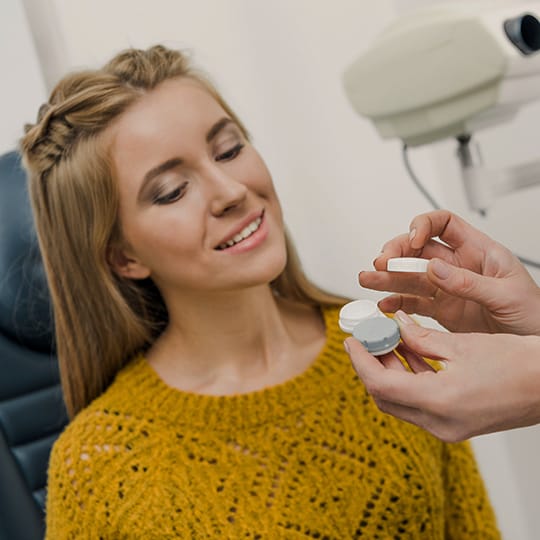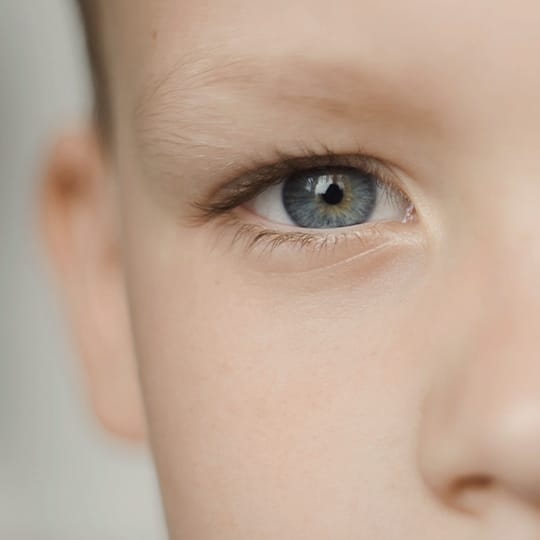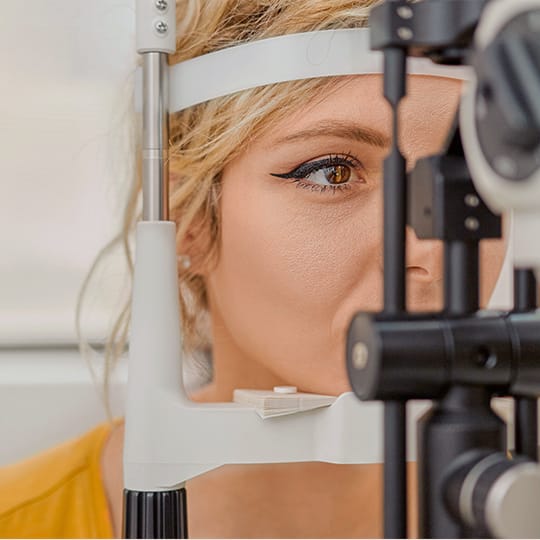Eyes on Your Child’s Vision
We know you’d do anything to protect and care for your child. What if we told you looking after their eyesight started with something as simple as an hour-long visit to the optometrist?
Kids grow fast, and their eyes develop and grow at a rapid rate with them. Children use their sight in plenty of areas, like sports, play, and especially school—80% of what children learn in school is visual.
Keep your child happy and healthy with regular eye exams at Calgary Optometry Centre. Bring your little ones in soon!
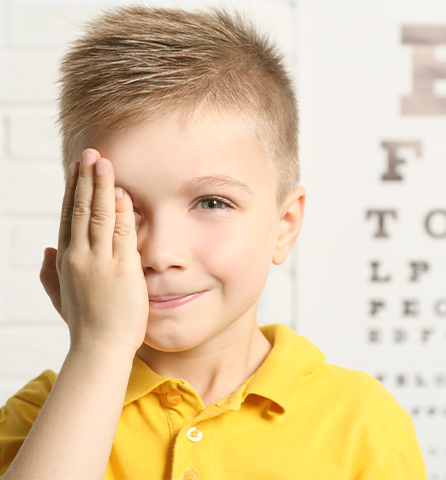

How Often Should My Child Visit the Optometrist?
To keep up with your youngster’s pace of growth, we’ll need to see them pretty frequently. The Canadian Association of Optometrists recommends the following eye exam timeline:
- Infants and Toddlers: Your littlest family member should undergo their first eye examination between 6 and 9 months.
- Preschool Children: Bring your toddler in for at least one eye examination between 2 and 5 years.
- School-Age Children: Your child should undergo an eye examination annually from ages 6 to 19.
The Ins & Outs of Your Child’s Eye Exam
Pre-Exam
Before you and your child meet with one of our optometrists, your child will have some preliminary testing done by an optometric assistant. These tests are fast and non-invasive and are used to help guide the tests performed by the optometrist.
These tests include:
- Retinal Imaging: This high-resolution, wide-field digital retinal camera takes detailed images of your child’s internal eye structures (retina, macula, etc.). Eye diseases such as glaucoma and macular degeneration are both clearly visible via this process.
- Autorefractor: This test quickly approximates what corrective lens prescription, if any, is needed for your child’s eyes. The optometrist uses this information to quickly and accurately discover the ideal prescription.
With the Optometrist
After the preliminary testing is complete, you and your child will meet with one of our optometrists for a few more tests and discuss any concerns you (and your child) may have.
Tests the optometrist performs include:
- Case History: Gathering information about your vision and eye health concerns. Updated general health and medications information as both of these factors may affect vision and eye health.
- Visual Examination of the Eye and Eyelid: The eye and surrounding tissues are great indicators of overall health. We assess your child’s during the exam to ensure everything looks as it should.
- Vision clarity testing/prescription refinement: If your child’s eyes would benefit from a corrective lens prescription, the optometrist will refine the approximation generated by the auto-refractor.
- Binocular Vision Assessment: The eyes are meant to work as a team. Various testing is done to make sure the eyes are aligned, tracking and focusing together.
- Digital Imaging Assessment: The optometrist will review the images captured by the retinal camera and OCT equipment, outlining any changes or concerns they may have.
After the Exam
After your child’s exam is done, our thorough optometrists will discuss any results with you. We’ll answer any questions (from you or your child!) and outline any potential treatment plan.
Common Childhood Eye Conditions
Amblyopia
Amblyopia, also called lazy eye, occurs when one eye sends abnormal signals to the brain. Your brain learns to ignore images from the weaker eye, and begins relying on the healthy eye for sight. This can lead to depth perception problems and your child noticeably favouring one eye.
Treatment is best started early, so bring your child in early for correction with patches, glasses, or eye exercises.
Strabismus
Strabismus is more commonly known as crossed eyes. The eyes may turn in any direction (up, down, in, out, etc.) and can cause double vision, headaches, and coordination issues.
Strabismus will not resolve over time, so early treatment is critical. This condition can be treated with glasses, prisms, exercises, and surgery.
Astigmatism
Astigmatism is a condition where the eye’s surface is improperly curved. This leads to distorted or blurred vision that can cause headaches or double vision.
Astigmatism treatments include glasses, contact lenses, and laser surgery (once they’re older).
Myopia
Myopia, also called nearsightedness, is when your child is able to focus on objects close to them, but struggles to see objects in the distance clearly. Our myopia control clinic may help your child with their myopia.
Serving Calgarians at 3 locations
Calgary Downtown
- 403-264-2639
- 403-264-2872
- dt@calgaryoptometry.com
- Suite 110, 840 7 Avenue SW
- Calgary, Alberta T2P 3G2
Office Hours
- Monday: 8:00 AM – 4:30 PM
- Tuesday: 8:00 AM – 4:30 PM
- Wednesday: 8:00 AM – 4:30 PM
- Thursday: 8:00 AM – 4:30 PM
- Friday: 8:00 AM – 4:30 PM
- Saturday: Closed
- Sunday: Closed
Lake Bonavista
- 403-278-8851
- 403-271-5139
- bv@calgaryoptometry.com
- #630, 12100 Macleod Trail SE
- Calgary, Alberta T2J 7G9
*The office is closed between 12:00 pm and 1:00 pm Mondays to Fridays.
Office Hours
- Monday: 8:30 AM – 5:00 PM
- Tuesday: 8:30 AM – 5:00 PM
- Wednesday: 8:30 AM – 5:00 PM
- Thursday: 8:30 AM – 7:00 PM
- Friday: 8:30 AM – 5:00 PM
- Saturday: 8:00 AM – 2:00 PM
- Sunday: Closed
Huntington Hills
- 403-274-5234
- 403-274-1674
- hh@calgaryoptometry.com
- 6530 4 Street NE
- Calgary , Alberta T2K 6H2
*The office is closed between 12:00 pm and 1:00 pm Mondays to Fridays.
Office Hours
- Monday: 8:30 AM – 5:00 PM
- Tuesday: 8:30 AM – 7:00 PM
- Wednesday: 8:30 AM – 5:00 PM
- Thursday: 8:30 AM – 5:00 PM
- Friday: 8:30 AM – 5:00 PM
- Saturday: 8:00 AM – 2:00 PM
- Sunday: Closed

EXPLORE OUR SERVICES
Our Brands

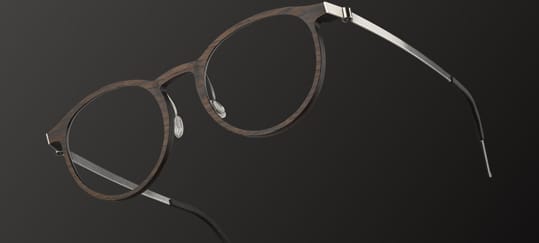






Our Google Reviews


Our Blog
How Long Does an Eye Exam Take?
Eye ExamEye exams are more than just vision checks, they’re also an opportunity to evaluate your overall health. From tracking changes in your prescription to detecting conditions like glaucoma or diabetes early, a quick visit can go a long way in protecting your sight. A routine eye exam typically takes about 30 minutes, while specialty exams, […]
Can Allergies Cause Dry Eyes?
Dry EyeAllergies can turn what should be a pleasant day into an uncomfortable battle. From rubbing itchy, swollen eyes to dealing with constant watering and blurred vision, the struggle is all too real for many. Allergies can absolutely leave your eyes feeling dry, irritated, and even sensitive to light, making it difficult to focus on your […]
How to Prevent Myopia from Worsening
Children’s Eye HealthMyopia, commonly referred to as nearsightedness, affects millions of people worldwide. For those with myopia, nearby objects appear clear, while distant objects are blurry or out of focus, making everyday activities like reading and driving a challenge. While myopia can be easily corrected with glasses or contact lenses, there are also ways to slow its […]
How Long Does an Eye Exam Take?
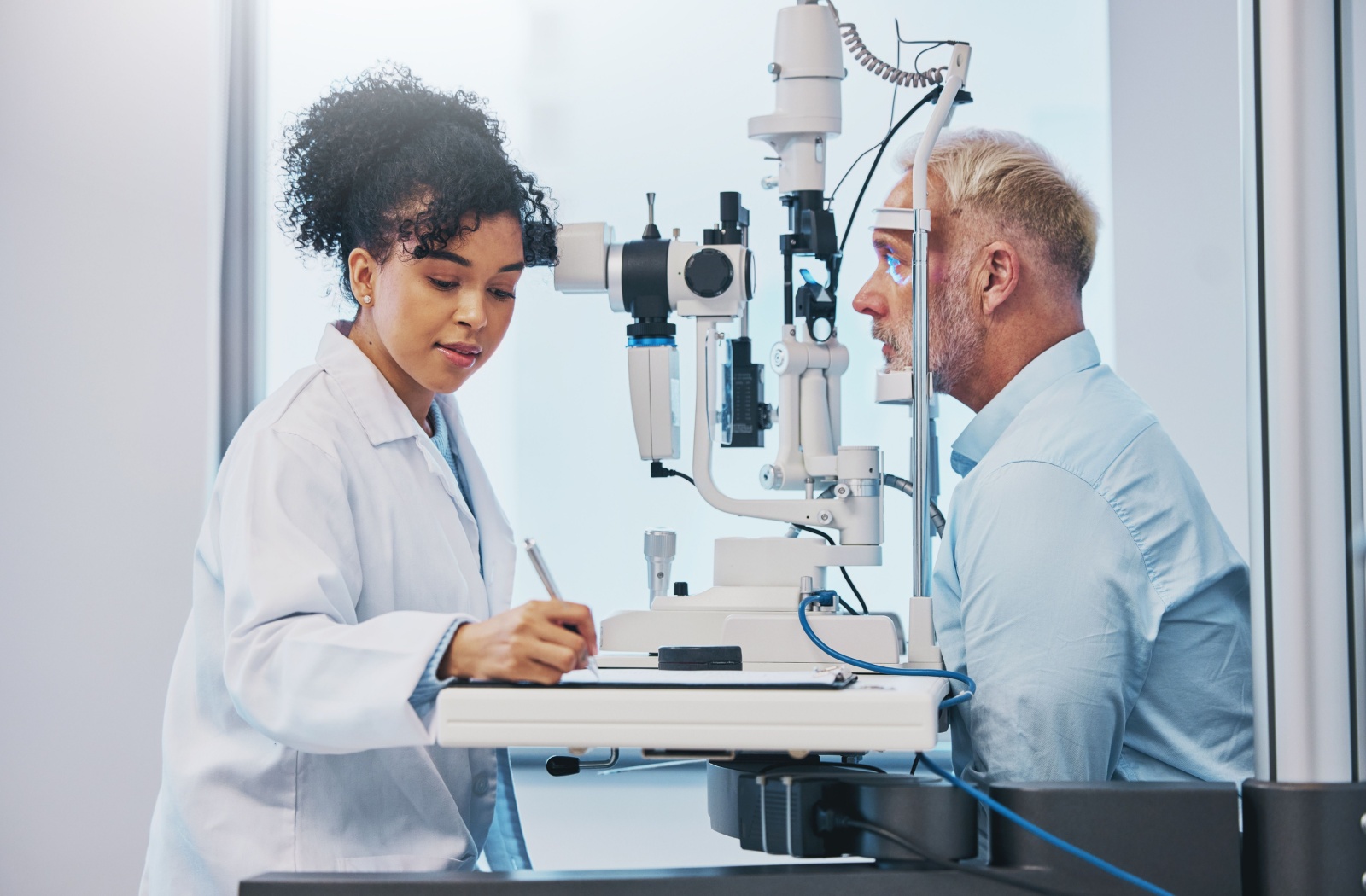
Eye exams are more than just vision checks, they’re also an opportunity to evaluate your overall health. From tracking changes in your prescription to detecting conditions like glaucoma or diabetes early, a quick visit can go a long way in protecting your sight. A routine eye exam typically takes about 30 minutes, while specialty exams, […]
Can Allergies Cause Dry Eyes?

Allergies can turn what should be a pleasant day into an uncomfortable battle. From rubbing itchy, swollen eyes to dealing with constant watering and blurred vision, the struggle is all too real for many. Allergies can absolutely leave your eyes feeling dry, irritated, and even sensitive to light, making it difficult to focus on your […]
How to Prevent Myopia from Worsening
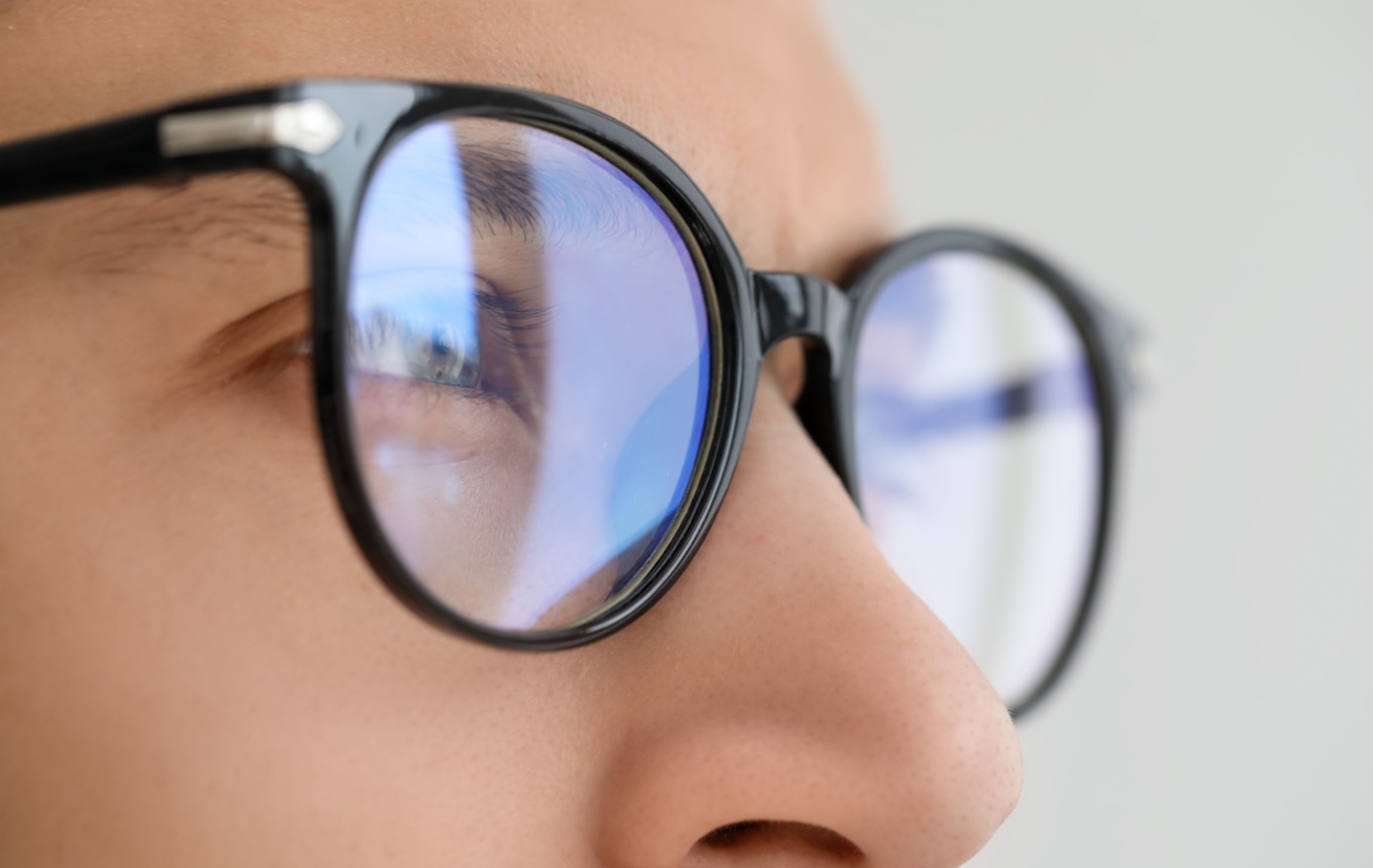
Myopia, commonly referred to as nearsightedness, affects millions of people worldwide. For those with myopia, nearby objects appear clear, while distant objects are blurry or out of focus, making everyday activities like reading and driving a challenge. While myopia can be easily corrected with glasses or contact lenses, there are also ways to slow its […]


